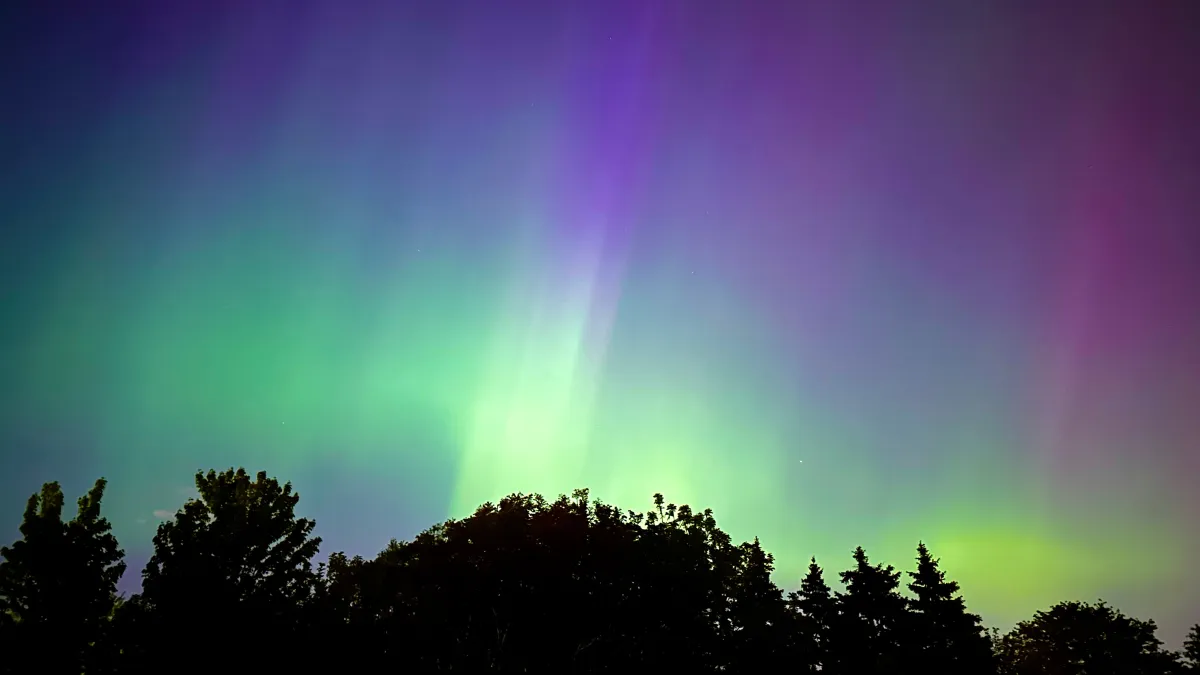Skywatchers around the world were treated to a dazzling light show this past Friday night as a powerful solar storm ignited the skies with vibrant auroras. This rare event, caused by an eruption of charged particles from the sun, brought the Northern Lights, also known as the aurora borealis, to regions where they are typically unseen.
What is a Solar Storm?
A solar storm is a temporary disturbance in the sun’s atmosphere that releases a burst of energy and charged particles. These particles, called solar wind, can travel millions of miles and interact with Earth’s magnetic field. Strong solar storms, caused by events like coronal mass ejections (CMEs), can disrupt Earth’s magnetosphere, the protective shield around our planet.
The effects of a solar storm can vary depending on its strength. Mild storms might cause minor disruptions to radio signals or power grids. However, powerful storms like the recent one have the potential to trigger widespread blackouts, damage satellites, and disrupt communication systems.
Solar storms occur relatively frequently, with smaller events happening several times a year. Major storms, however, are less common, typically happening every few years to a decade.
The Latest Solar Storm and its Impact
This past Friday, Earth experienced a powerful geomagnetic storm, the strongest since 2005 according to the National Oceanic and Atmospheric Administration (NOAA). This storm was triggered by a CME that slammed into Earth’s magnetosphere, causing it to wobble and distort.
The most spectacular consequence of this solar storm was the breathtaking display of auroras. These shimmering curtains of light, usually confined to the high-latitude regions around the Arctic, were visible far south this time. People from Maine all the way down to Alabama reported seeing the mesmerizing auroras dancing across the night sky.
However, the storm also posed potential threats. The intense energy from the solar wind can induce currents in power lines, leading to blackouts. Additionally, communication satellites can be damaged by the charged particles, disrupting GPS and radio signals. Thankfully, there were no major reports of widespread disruptions from this storm.
Northern Lights Visible in the US
For many people in the southern United States, Friday night offered a rare opportunity to witness the Northern Lights with their naked eye. Typically, auroras are best seen in Alaska, Canada, and the northern parts of the US. However, during strong solar storms, the charged particles can penetrate deeper into Earth’s atmosphere, making the auroras visible at lower latitudes.
This event provided a unique opportunity for people to experience this natural wonder firsthand. Photos and videos of the auroras flooded social media, showcasing the vibrant colors and mesmerizing patterns that filled the night sky.
For those hoping to catch a glimpse of the Northern Lights in the future, there are resources available to help predict their visibility. Websites like the NOAA’s Space Weather Prediction Center provide forecasts and alerts based on solar activity.
Preparing for Future Solar Storms
The recent solar storm serves as a reminder of the potential dangers these events pose. While this particular storm caused minimal disruptions, stronger storms could have more serious consequences. The NOAA plays a crucial role in monitoring solar activity and issuing warnings when necessary.
Understanding the solar cycle, a period of roughly 11 years where the sun’s activity fluctuates, is also crucial for preparation. During the peak of the solar cycle, the sun is more likely to produce powerful solar flares and CMEs. By monitoring solar activity and understanding the solar cycle, scientists can better predict and prepare for future solar storms.
The importance of having robust infrastructure that can withstand the effects of solar storms cannot be overstated. Upgrading power grids and communication systems to be more resilient is an ongoing effort. Additionally, having emergency plans in place for potential blackouts and communication disruptions is essential.
Conclusion
The recent solar storm provided a stunning display of the Northern Lights and a reminder of the power of the sun. By understanding these events, preparing our infrastructure, and monitoring solar activity, we can mitigate the potential risks associated with solar storms and continue to be amazed by the wonders of the cosmos.



